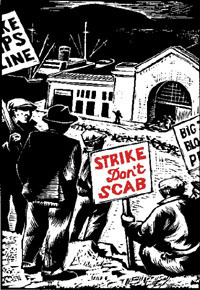|
|
|
|
|
|
The Black Dust You Breathe on BART-ATU 1555 Workers And Public At Risk
The Black Dust You Breathe on BART-ATU 1555 Workers And Public At Risk
http://www.sfweekly.com/sanfrancisco/news-bart-health-pollution-embarcad...
By Julia Carrie Wong
Wednesday, Dec 16 2015
When the Embarcadero BART station opened in 1976, the east wall was adorned by a 50-foot-tall sculpture made of 7,000 pounds of bright orange rope. By the time artist Barbara Shawcroft's massive macrame was dismantled in 2014, after decades of bureaucratic tangling and artistic recrimination, the rope was as black as soot.
The air (and dust) that soiled tons of rope is also the air that thousands of commuters and transit workers breathe every day. And according to a group of young scientists, that air is potentially hazardous to your health.
Problems with the BART station's air were first identified in 2011 by The East Bay Academy for Young Scientists, which partners public school students with U.C. Berkeley undergrads and science instructors to perform real-world experiments. That year, EBAYS students measured the concentration of particulate matter (PM) at BART stations — and found that PM concentration at Embarcadero was "through the roof," says Kevin Cuff, EBAYS's program director. "It was significantly in excess of what the EPA says are safe levels... It's a significant health concern to children and adults with upper respiratory issues."
Most scientists agree that transit system dust is caused by the friction between tracks and wheels when brakes are applied. The EBAYS students hypothesize that Embarcadero Station gets inundated with that dust — which is primarily metal — as trains arrive through the Transbay Tube. They plan to present their findings at the American Geophysical Union's Fall Meeting this week at the Moscone Center.
The students aren't the only ones who have noticed the poor air quality at the Embarcadero BART station. Chris Finn, the president of the Amalgamated Transit Union Local 1555, which represents BART drivers and station agents, says the issue — along with noise pollution — has arisen with his membership, some of whom breathe that air for their entire shift, every day.
But BART staff seem less concerned. "This dust has been analyzed and found not hazardous to breathe," says spokeswoman Alicia Trost. BART monitors air quality to comply with Cal/OSHA standards, and those results are "well below the allowable limits and not excessive," she says.
However, Cal/OSHA standards apply to 24-hour averages, while the EBAYS students found the highest levels of PM in the time immediately before, during, and after a train arrival — exactly when the station platform is packed with commuters.
Trost would not comment on the potential safety hazards during those periods of time when the levels spike. She also declined to provide SF Weekly with the data on air quality, broken out by station.
Nick Josefowitz, the recently elected BART board member who represents much of San Francisco, told SF Weekly that he takes the students' research seriously, and promised to raise the issue at the next BART Board meeting.
San Francisco is not the only city to struggle with air quality issues in underground transit systems. Studies have found high levels of particulate matter in subway systems in New York City, London, Tokyo, and Paris as well. Some scientists have studied using magnets to draw the metallic particles out of the air.
If anyone is in touch with Barbara Shawcroft, perhaps she could create a new 50-foot-tall magnetic sculpture. This time no one would care if it gathered dust.
-

- Log in to post comments
- Printer-friendly version



